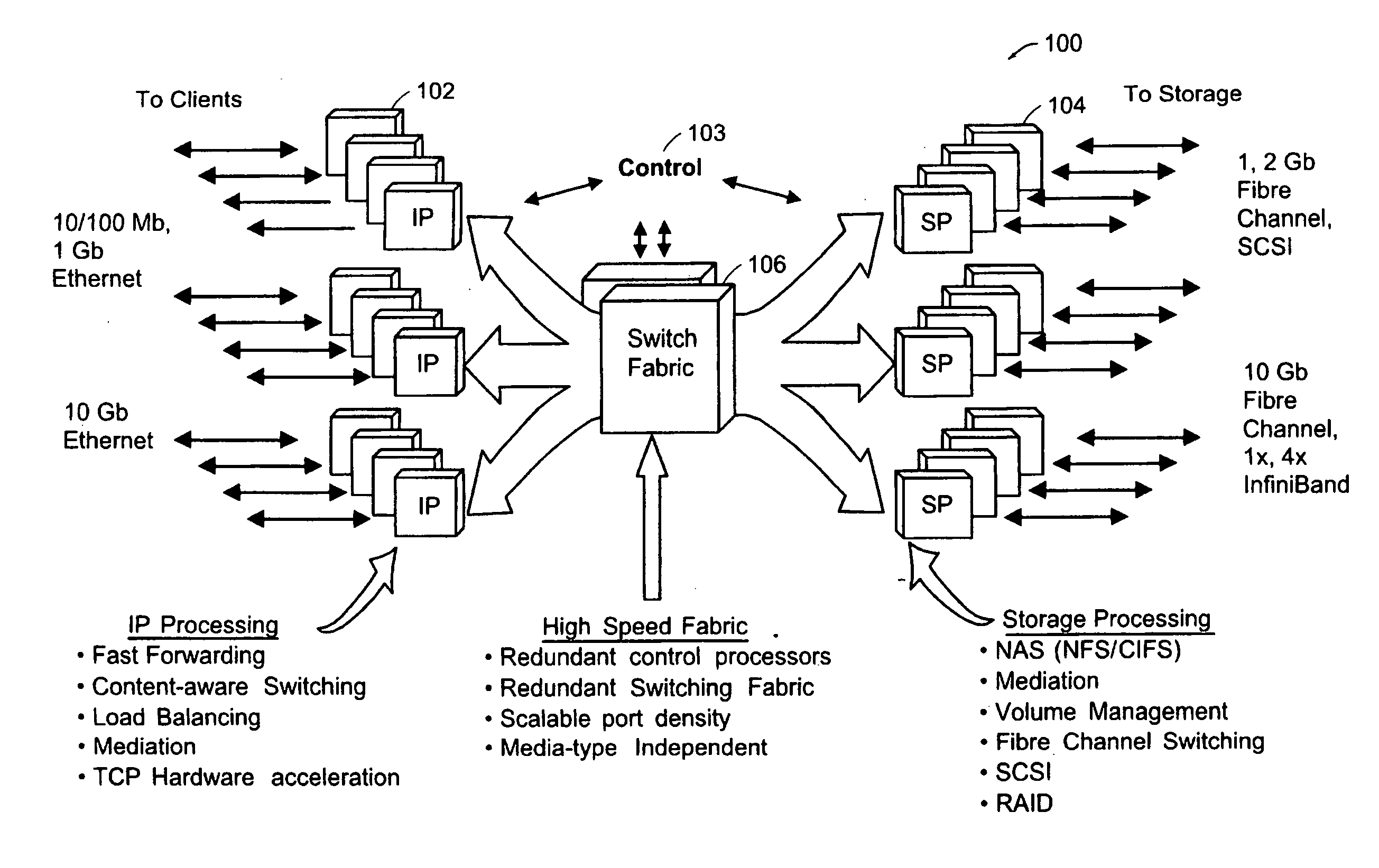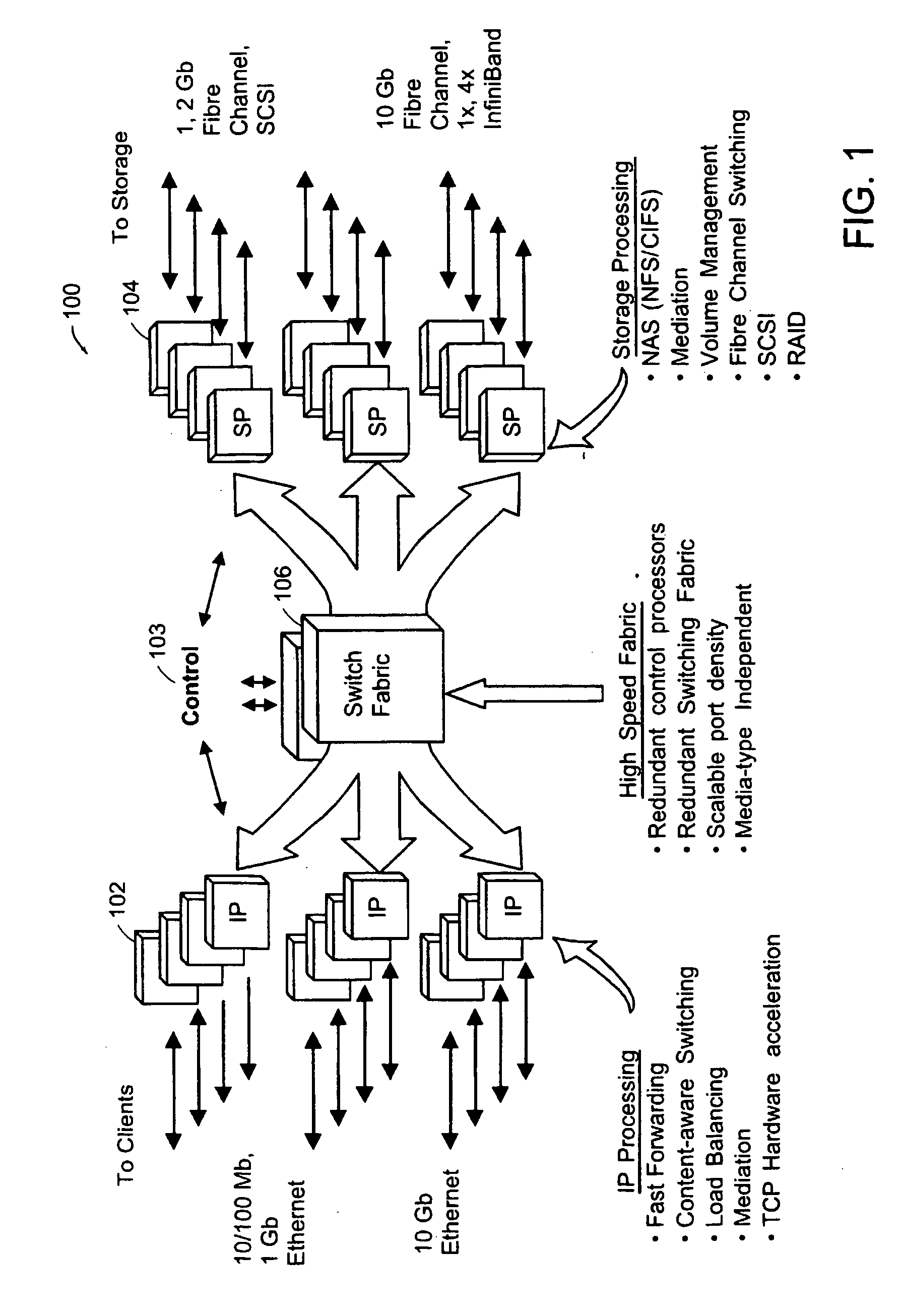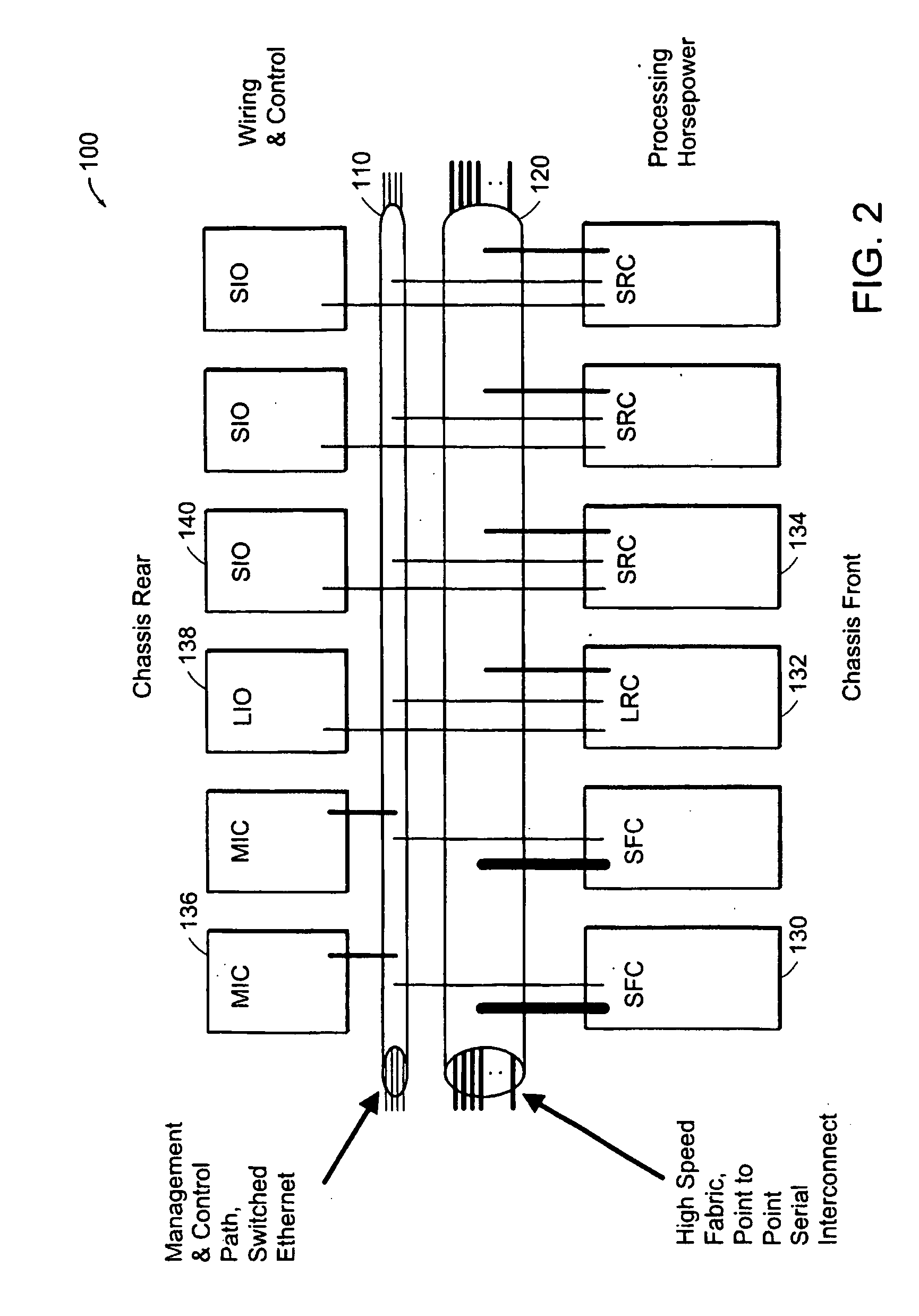Conventional systems, however, do not enable seamless connection and
interoperability among disparate storage platforms and protocols.
Users are often require to deal with multiple suppliers of routers, switches, host
bus adapters and other components, some of which are not well-adapted to communicate with one another.
Vendors and standards bodies continue to determine the protocols to be used to interface devices in SANs and NAS configurations; and SAN devices do not integrate well with existing IP-based management systems.
Still further, the storage devices (Disks,
RAID Arrays, and the like), which are
Fibre Channel attached to the SAN devices, typically do not support IP (and the SAN devices have limited IP support) and the storage devices cannot be discovered / managed by IP-based management systems.
Although TCP is useful, it requires substantial processing by the
system CPU, thus limiting
throughput and
system performance.
However, this approach does not eliminate the problem, but merely moves it elsewhere in the
system, where it remains a single chokepoint of performance limitation.
However, while these approaches somewhat reduce system
CPU load, they have not been observed to provide substantial performance gains.
Some required components of TCP, such as
retransmission of a TCP segment following a
timeout, are difficult to implement in hardware, because of their complex and condition-dependent behavior.
Alternatively, such systems may decline to
handle TCP segment
retransmission or other complex events and instead defer their processing to the system CPU.
However, a major difficulty in implementing such "
fast path / slow path" solutions is ensuring that the internal state of the TCP connections, which can be modified as a result of performing these operations, is consistently maintained, whether the operations are performed by the "
fast path" hardware or by the "slow path" system CPU.
The MIC will not support local editing of configuration files.
Assuming the
software is working properly than this condition is caused by a hardware problem and the ports on the cards will be held in the "hold down" state.
The lack of opening SYN simplifies part of the balance operation, but the effort of balancing each packet could add considerable latency to UDP transactions.
Many disk transactions result in
forward looking actions on the
server (people who read the 1st half of a file often want the 2nd half soon afterwards) and rebalancing during active disk transactions could actually hurt performance.
CIFS supports no
recovery guarantees if the session is terminated through
server or network outage.
However if the
server fails (hardware or
software) and there is no way to transfer state from the failed server to the new server, then the TCP session must be brought down and the
client must reestablish a new connection with a new server.
UDP however is not a reliable transport.
A problem can arise if all the servers do not send the same response, for example one of the servers fails to do the write while all the others are successful.
This results in the server's file systems becoming un-sychronized.
However, this will not be the case in most systems.
This avoids having to copy (potentially large) forwarding tables between slots but may result in each packet traversing the switch fabric twice.
The latter case is more complicated, as the packets received on the
Server Administration port can only be sent to a particular server if that server's
IP address is unique among all server IP addresses known to the Pirus box.
But when the Pirus box performs load balancing and NAT from the
virtual IP address to a particular server, the destination IP addresses and TCP / UDP port of the packets may no longer be unique to a particular flow.
Although it is probably not useful to perform the forwarding function if the packet is corrupted because the data used by those functions may be invalid, the process should still work.
Also, SAN devices do not integrate well with existing IP-based management systems.
Lastly, the storage devices (Disks,
Raid Arrays, etc), which are
Fibre Channel attached to the SAN devices, do not support IP (and the SAN devices have limited IP support) and the storage devices cannot be discovered / managed by IP-based management systems.
However, conventional IP-based management systems can not discover FC attached storage devices.
This lets users apply standards based; widely deployed systems that manage IP data networks manage storage devices--something currently not possible.
IXP switch fabric
multicast transmission error
Simultaneous current filesystem server set fatality
There clearly are limits to how many NFS
client requests you can
queue before you are forced to drop.
Note any
queue space is finite so pausing for too long can result in dropped messages.
When a system contains more than one
Client Server per Data
Server, the cache coherency mechanism must become more complex.
This is because one
client server can modify data that is in the local cache of the other client server, and the data will not match between the
Client Servers.
Servers may
drop out of the server set if there is congestion or failure on the processor or associated disk subsystem.
However, most packets do not represent an exceptional case and can be handled with much simpler and faster processing.
As a result, it would be insufficient to maintain a forwarding table only on the IXP that sends packets out.)
In the case of TCP, however, a given packet may or may not be eligible for Fast-Path processing, depending on the congestion / flow-control state of the connection.
For example, the described Fast-Path does not itself
handle TCP connection establishment and teardown.
Similarly, the described Fast-Path does not itself
handle IP options and
IP fragmentation; these conditions are handled by the conventional TCP stacks on both the LRC and the SRC.
Similarly, the described Fast-
Path system does not handle TCP
retransmission and reassembly; these aspects are handled by the conventional TCP stack on the SRC.
 Login to View More
Login to View More  Login to View More
Login to View More 


